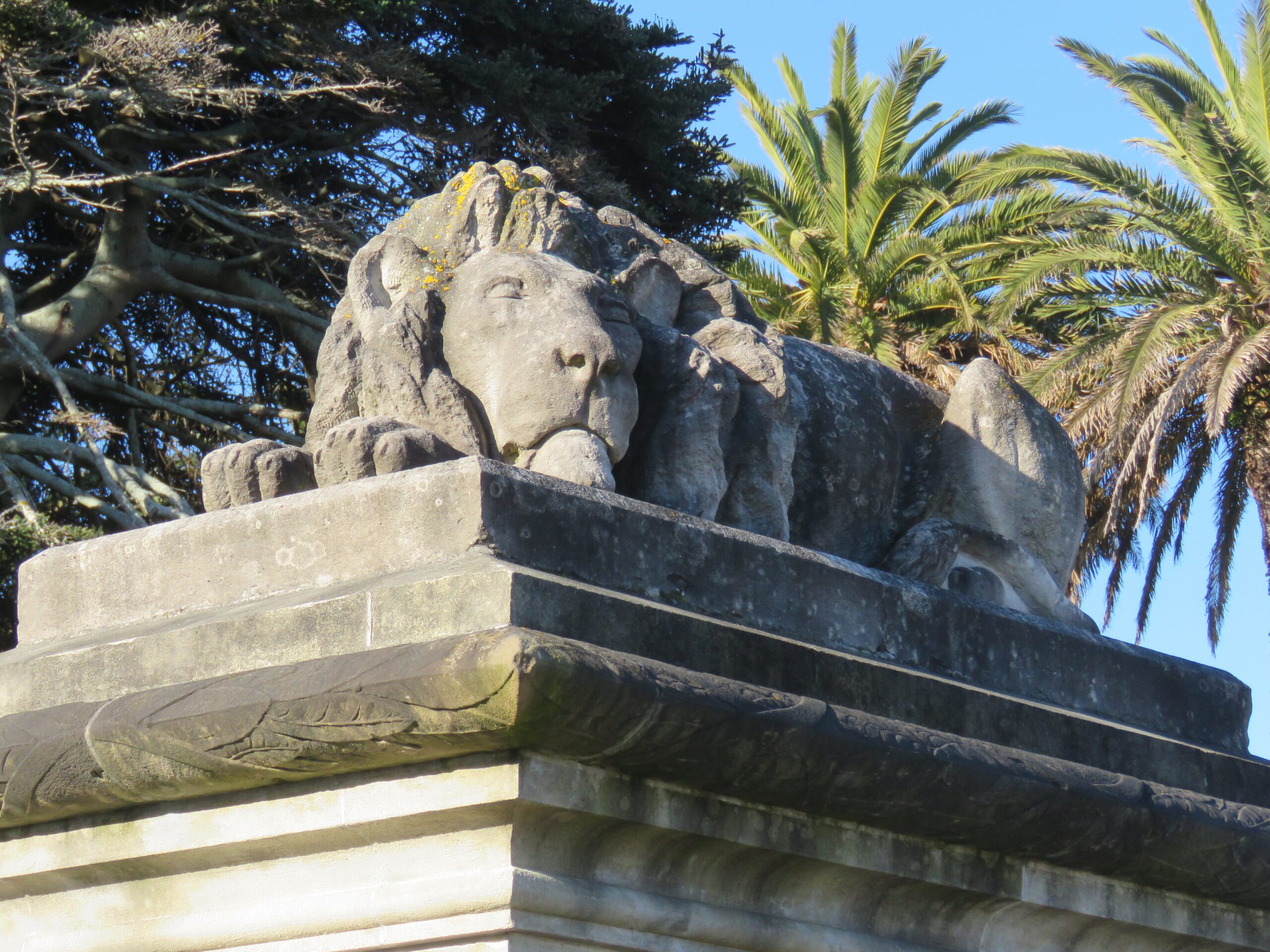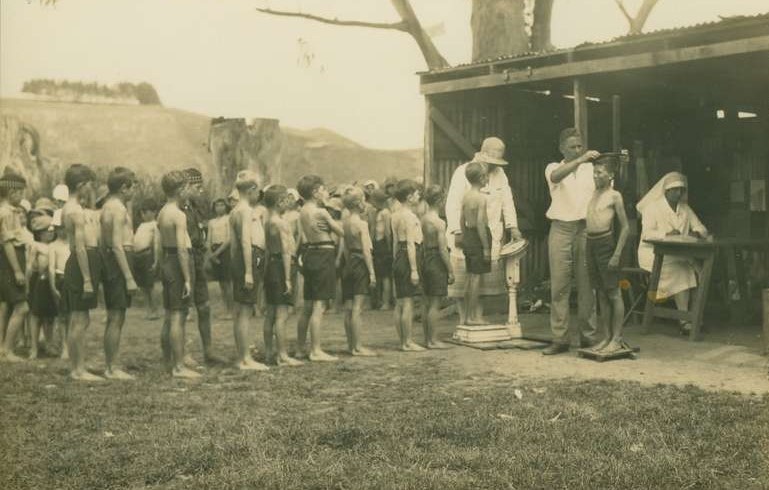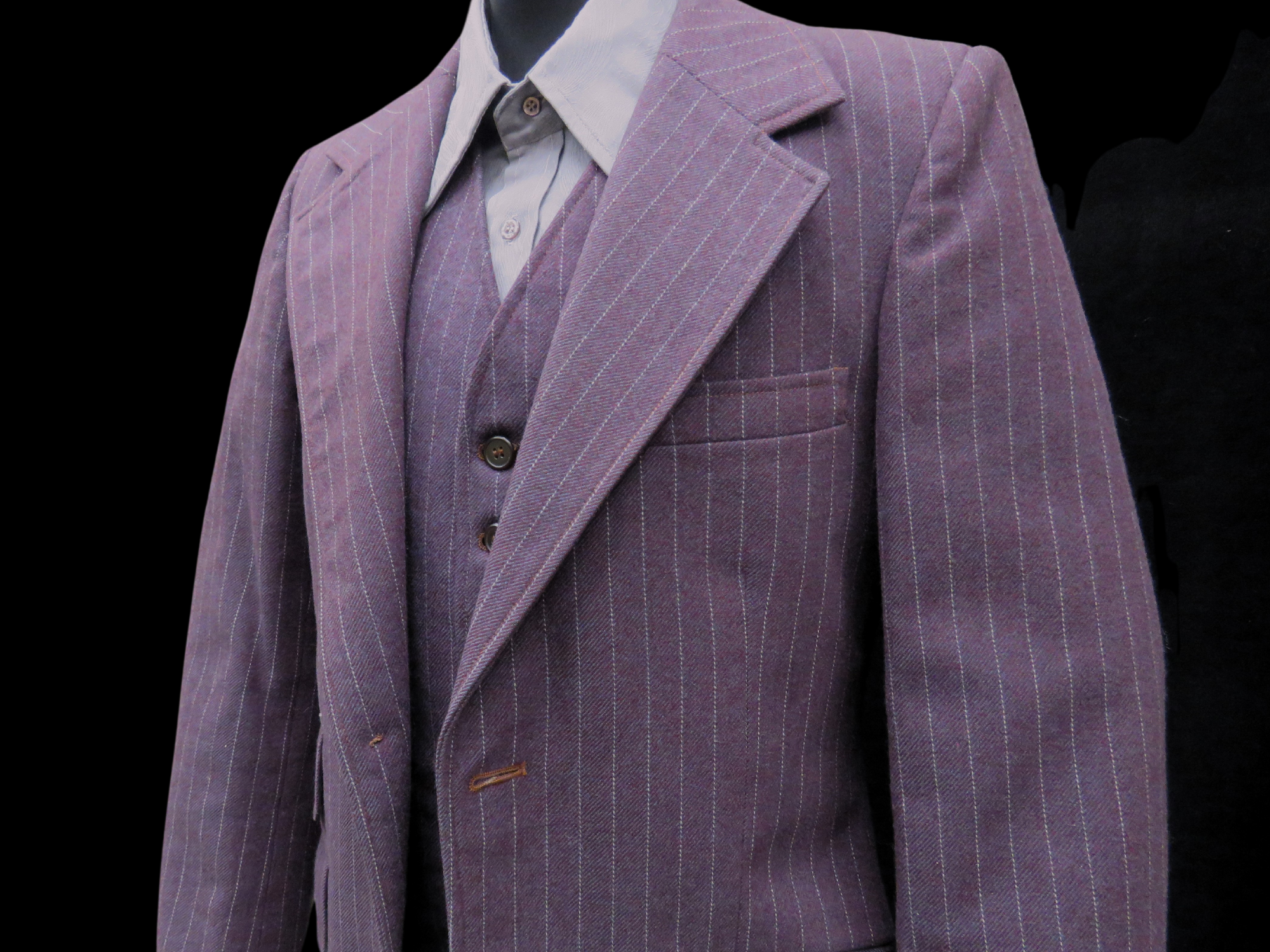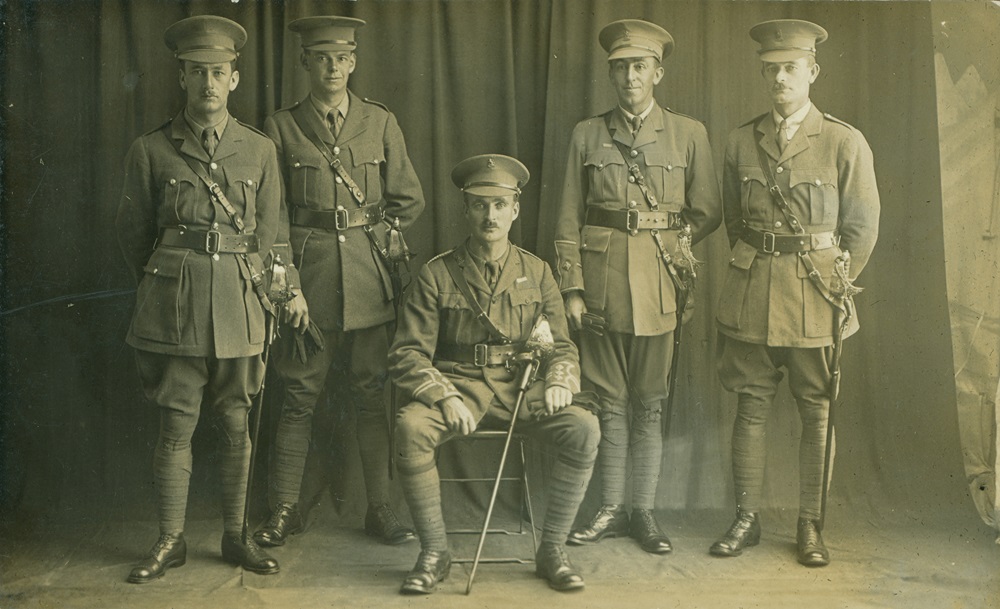Collection Stories
This simple, yet stunning, evening dress embodies the fashionable 1930s silhouette with its slender, elongated torso and long, flared skirt. Though the lines are deceptively simple, the overall effect is sinuous femininity. It could equally be worn today.
Made from black silk faille the gown has narrow shoulder straps, and a princess-line gored skirt which is cut right up to the centre gathering of the bust. The bust fabric is cut on the bias while the skirt fabric is on the grain. The back opening has 19 covered buttons and fabric loops. To break the blackness the dress is decorated with a colourful floral crepe fabric strip appliqued around the top edge of the bodice and the mid-bottom of the skirt.
Although we don’t know who made it, the sewing is very accomplished. Jean Doris Trench wore the dress in England in 1939 as a 26-year-old. Jean donated it to the Museum in 1987 and recalled wearing it in 1939, although the events she had worn the dress to, or why it was so important to her that she had brought it to New Zealand, cared for it, and held onto it for so long, were not recorded at the time of donation.
The late 1930s were an exciting time for Jean. She qualified and registered as a masseuse in 1938. Her training included (as it was then called) ‘Massage, Medical Gymnastics, and Medical Electricity, Light and Electrotherapy’. World War II began in September 1939 and at some stage she was introduced to Whanganui-born Lieutenant Michael Russell Grace, who was training in Britain and serving with the army there. The pair became engaged in late 1940.
Michael and Jean married in January 1941 and emigrated to New Zealand in 1946 with their two children. They lived at Arles on Riverbank Road in Whanganui, which was Michael’s family home. He grew up there while attending Whanganui Collegiate School. The home had originally been owned by his grandfather, Dr Morgan Grace, who had purchased the land in 1870.
Jean was the daughter of English architect Gilbert Mackenzie Trench. His name may not resonate with many people but one of his designs is known in over 200 countries, though not for its original function. Trench is the architect of the 1929 model police telephone box. The blue telephone box was once a common sight on the streets of Britain. It became considerably more famous as the TARDIS (Time And Relative Dimension In Space) in the long-running popular BBC television series Dr Who. After retiring, Gilbert Trench also emigrated to New Zealand and lived with Jean and her family from 1949 until his death in 1979.
By Trish Nugent-Lyne, Kaihāpai Taonga/Collections & Curatorial Lead at Whanganui Regional Museum.
Image: Evening dress
1939. Maker unknown.
Photographed by Kathy Greensides
WRM 1987.33
View the full-length image.






